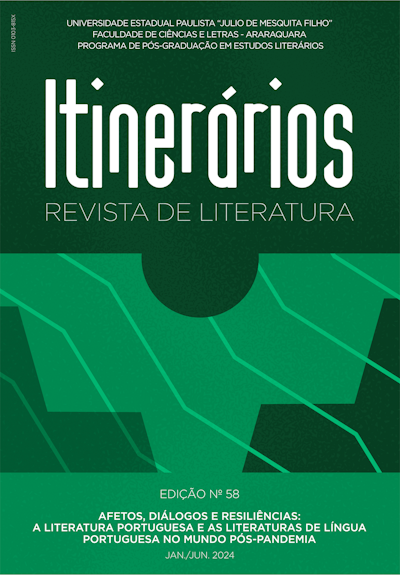Aparição by Vergílio Ferreira in cinema(re)creation and (re) interpretation
(re)creation and (re) interpretation
DOI:
https://doi.org/10.58943/irl.v1i58.18737Keywords:
Vergílio Ferreira, Aparição, Cinema, Fernando Vendrell, GenderAbstract
This paper studies the transfictionalization devices involved in adapting the novel Aparição (1959), by Vergílio Ferreira, to cinema, directed by Fernando Vendrell (Aparição, 2018) and scripted by Fátima Ribeiro and João Milagre. The interest is on the process of transcoding from one communicative system to another, and its consequent potential for (re)interpretation and (re)creation (HUTCHEON, 2011) of the novel. Recognizing the difficulty of transporting a worldview of a reflective, metaphysical, existentialist nature like Ferreira’s to cinema, I start from the analysis of filmic semiotics, focusing on the way in which history, time, space, characters are transfigured in the sense of refocus some axes themes of the “original” work. Among the aspects that receive new critical-thematic vigor in the film is the representation of women in a conservative, patriarchal society, in the context of the Salazar dictatorship. This representation is highlighted, greatly, in the gender performances (BUTLER, 1998) that give survival (REIS, 2018) to the characters Sofia and Ana.
Downloads
Published
Issue
Section
License
Os manuscritos aceitos e publicados são de propriedade da revista Itinerários. É vedada a submissão integral ou parcial do manuscrito a qualquer outro periódico. A responsabilidade do conteúdo dos artigos é exclusiva dos autores. É vedada a tradução para outro idioma sem a autorização escrita do Editor ouvida a Comissão Editorial.

